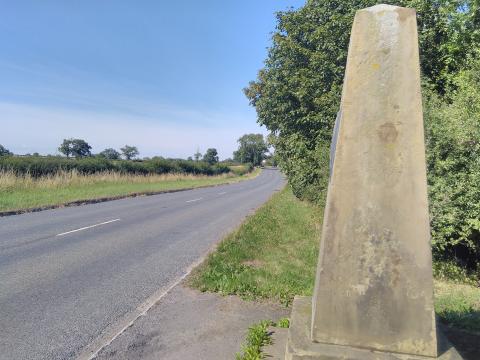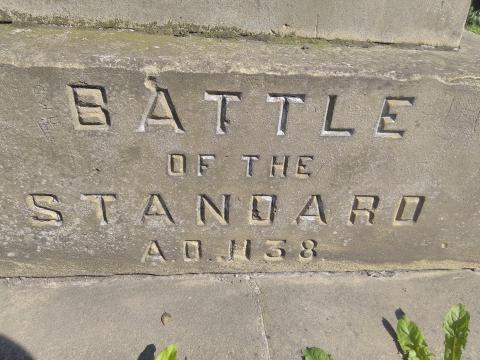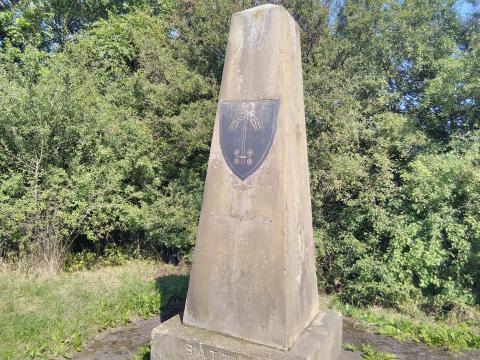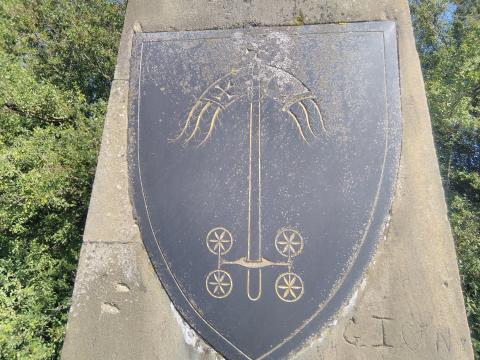Battle of the Standard

This summer, I called at the memorial to the 1138 Battle of the Standard, just above Northallerton. While England's King Stephen fought against his southern barons, the Scots thought it expedient to invade northern England. The year marked a period called the Anarchy because the Empress Maud, Stephen’s cousin, also claimed the crown. As neither of them were then capable of actually ruling, the country became a chaos. King David of Scotland therefore took advantage of English weakness and headed south. He had been successful at the recent Battle of Clitheroe, so he was in a strong position. The general who met him, unusually, was Thurstan, Archbishop of York.
Having arranged for the various northern nobles to gather with their retinues at York, Thurstan unveiled his secret weapon: the carroccio. This was a large four-wheeled wagon bearing the banners of the four northern minsters - York, Durham, Ripon and Beverley, as well as a pyx. This is a container carrying a consecrated wafer, or communion bread, which Thurstan was pleased to reckon the actual flesh of Christ. Those who have watched Ridley Scott’s 2005 Kingdom of Heaven will be familiar with another carroccio which the crusaders considered to bear the ‘true cross’.

Thurstan and his Anglo-Normans won the battle, doubtless attributing victory to their sacred relic as well as their military skill. There is a ditch nearby called Scot Pit Lane which indicates the fate of the fallen. I suspect the battle was won because the local De Mowbrays were able to identify which parts of their land were marsh and therefore best avoided, while the Scots became bogged down. Furthermore, the men of Galway, who were brave but unarmoured, insisted to King David that they be allowed to charge the English first. The latter’s arrows made short work of them. What today is a pleasant enough road and fertile farmland was then a scene of bloody carnage.
The Biblical Ark of the Covenant was often taken out before Israelite battles, such as the attack on Jericho. It symbolised God going before His people. Yet in 1 Samuel 4, Israel was defeated and the ark captured. It is faithfulness the Lord seeks, not awe of a physical object, or superstitious regard for banners and a wafer. Although such an object might have terrified the Scots and given succour to the English men-at-arms, I suspect the God of heaven despised both armies.
The Ark always represented the coming Christ. It is He who goes before His people and dwells in their midst. Wear a cross if you wish, carry a prayer card in your wallet, touch a Bible before you leave the house - but none of these things have the power to save or protect even a sausage. It is Christ who assists and supports. So look to Him, not earthly symbols and tokens.


- Log in to post comments
